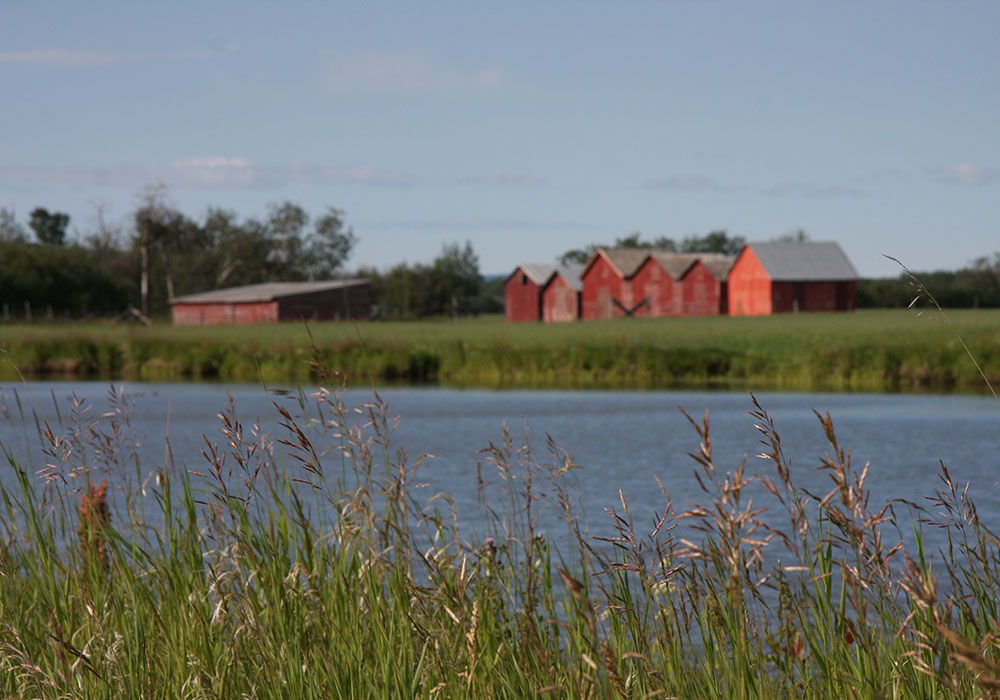Protection against respiratory ailments in farm children may begin in the womb, according to early findings of the Wisconsin Infant Study Cohort.
The ongoing study, which is comparing 100 farm and 100 non-farm families in that state, started as a pilot project in 2012 to discover what factors in a farm environment are contributing to these health benefits.
Researchers Christine Seroogy of the University of Wisconsin and Casper Bendixsen of the National Farm Medicine Centre hope the reasons for these benefits can one day be applied to a wider population.
Read Also

Producer profits remain under significant pressure
Manitoba farmers are facing down a double hit of high input costs, like fertilizer, and low grain prices as they harvest their next crop.
Preliminary data shows farm kids in the study have half the rate of confirmed illness as other children and one-third the rate of dermatitis.
“That’s significant because there it is a precursor to asthma,” said Bendixsen.
“If they have lower rates of atopic dermatitis, they likely will have lower rates of asthma,” said Bendixsen. “Asthma is one of the most expensive diseases we deal with.”
Bendixsen said livestock operators were chosen for the study because they believe they are the ones with rich microbiome.
Seroogy is focused on the microbial environment on farms, which includes bacteria and other microscopic organisms, and within farm homes as the likely reasons for lower rates of asthma and allergies.
“The microbial environment within children’s life and home is much richer, and that in turn sends signals to the developing immune system and leads to the ability to fight respiratory infections better so they’re not as sick,” she said.
“It’s shaping how they respond to allergens in everybody’s environment in a manner that is preventing them from having allergy symptoms.”
Seroogy, who is tracking babies to the age of two and pregnant women, said studies have suggested protection from the development of allergies stems from being born into the farming environment with the greatest benefits to infants whose mothers are involved in farm activities.
“The strongest protection is suggested to being very early in life, beginning in utero,” she said.
Seroogy said the Wisconsin cohort study is the only U.S. birth cohort study that’s rural in nature and addressing the influences of farming.
“An infant’s immune system is immature and shaped by environment and exposures.”
In a separate project, Seroogy is collecting cord blood from pregnant Amish women.
Early results suggest that the immune systems of children born into farm families are different even at the time of birth and that immune differences may intensify with age because of special environmental conditions on farms.
Ongoing studies include following the immune systems of children born into farm and non-farming environments over several years.
There is a commonly held belief about farm-raised children getting sick less often.
“This is validating some of that belief,” Bendixsen said. “In this study, we are showing that choosing to farm is a preventative activity that improves the health and lives of children.”
Seroogy said researchers hope to find key ingredients that can also help protect urban children.
Added Bendixsen: “It’s groundbreaking in finding a solution for everybody.”
The completed study will be compared with other studies underway in urban centres.
Bendixsen said families were drawn from the region near the Marshfield Clinic in Wisconsin but finding pregnant farm women for the study proved challenging.
“As these farms consolidate and people begin to live off the farm, the microbiome itself may not be as relevant and won’t be able to study it in the same way,” he said.
“It’s a diminishing resource, especially in livestock.… In the end, people may consider getting a dog or a cow or taking kids to a petting zoon once in a while.”
Other recent studies have shown a lower rate of inflammatory bowel disease in farm children and a low prevalence of asthma in Amish children.
Nationwide, 13.5 percent of children have been diagnosed with asthma, and 8.6 percent still have it, while the prevalence of asthma among Amish youths is 5.2 percent, reports the Centres for Disease Control and Prevention.
















